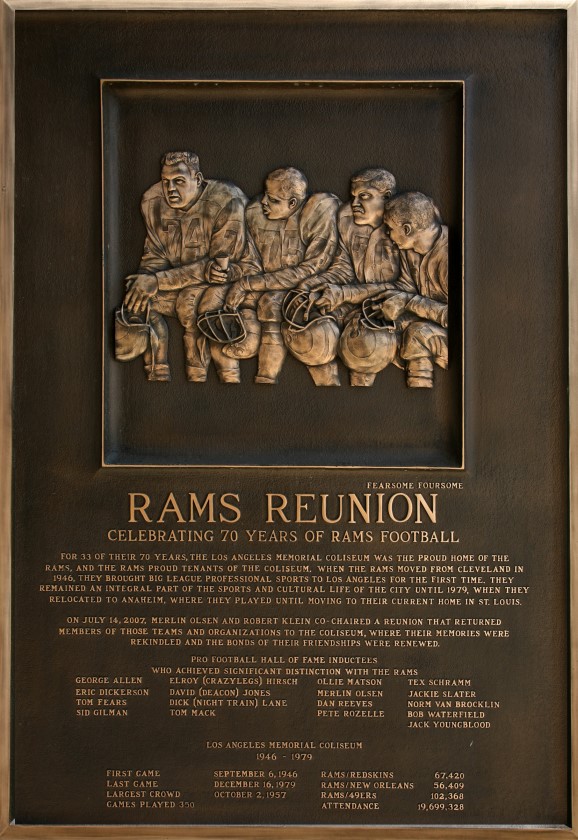The sand is finally out of my clothes and my wicked farmer’s tan is finally beginning to fade.
On July 16 of this year, I took a much needed vacation to California where I got to have a wide variety of experiences I wouldn’t have had in Maryland. After all, I’ve lived my entire life on the East Coast, so, going across the country was something that appealed to me.
As I worked my way around California and checked out multiple landmarks, the inner sports geek in me came out. I decided to go check out a place that has already shaken up the NFL this offseason.
For those who don’t know, the Rams decided they don’t want to be in St. Louis anymore and chose to pack their bags and leave for the Los Angeles, ultimately leaving St. Louis, and its fans, high and dry.
After 20 seasons of calling St. Louis home, the Rams decided they want to return to California for the first time since 1994.
You may be wondering how any of this information is relevant to football or even sports in general in Maryland.
Believe it or not, a local Maryland team may have actually played a colossal role in Los Angeles Rams history. Let’s set the stage here.
I was staying in Laguna Nigel, which meant I was roughly an hour away from the Los Angeles Memorial Coliseum – where the Rams will be temporarily playing their home games until their new field, City of Champions Stadium, is finally constructed. I decided to head there and check out this significant piece of Los Angeles history.
I walked around the stadium, holding in all my “ooh’s” and “ah’s” as I was desperately trying to look as least like a stereotypical tourist as possible. I eventually stumbled across a plaque that had “Rams Reunion” imprinted in gigantic, gold letters.
I observed the plaque in fine detail as I was trying to digest I was in a stadium that was in rich tradition to Los Angeles and California.
I read the plaque from top to bottom and was completely shocked by the discovery I had just made: the Washington Redskins are the first team to ever play the Rams in the coliseum. The game took place on September 6, 1946, and drew a crowd of 67,420.

I flew all the way out to California, and then drove to Los Angeles, only to discover Maryland had made a mark in the history of where the Los Angeles Rams will be playing this upcoming season. What a small world we live in.
The Redskins aren’t the only Maryland team who may find the Rams move to Los Angeles relevant. Let’s say the Ravens have been of both ends of relocation in their history.
In 1984, after residing in Baltimore since 1953, the Colts decided to pick up their stuff and relocate to Indianapolis. This left Baltimore fans both confused and angry. There is still bad blood between the Colts and the Ravens to this day because of it.
Ravens fans can feel the pain of the fans in St. Louis, who are likely still furious about the recent events that have recently transpired. Ironically, the Colts are not too far from St. Louis and may pick up a large amount of the former St. Louis Rams fan base.
The Ravens also know how relocating can give your team a refreshing change of scenery and can set a franchise up to be more successful.
In 1995, former Browns owner Art Modell decided to relocate the Cleveland Browns to Baltimore and become the team we know them as today, the Ravens. As a result, Cleveland was without a football team from 1996 to 1998 and Baltimore had yet another NFL franchise in their city.
Now, the Browns and Ravens are division rivals. Though the Ravens have topped the Browns 25 times in 36 meetings, the Browns always play with a chip on their shoulder against the Ravens because of what Art Modell did.
In the end, Stan Kroenke’s decision to move the Rams to Los Angeles was more significant to Maryland than some people realize. The Redskins hold some history in the Rams new home stadium, and the Ravens know a thing or two about relocation, on both sides of the spectrum.





